Burdekin: Supporting information
- Below-average wet season rainfall contributed to low runoff across the region.
- End-of-year storage was only slightly less than last year due to heavy rainfall in late-January 2020.
- 56% of the allocated water was taken in 2019–20, primarily for irrigated agriculture.
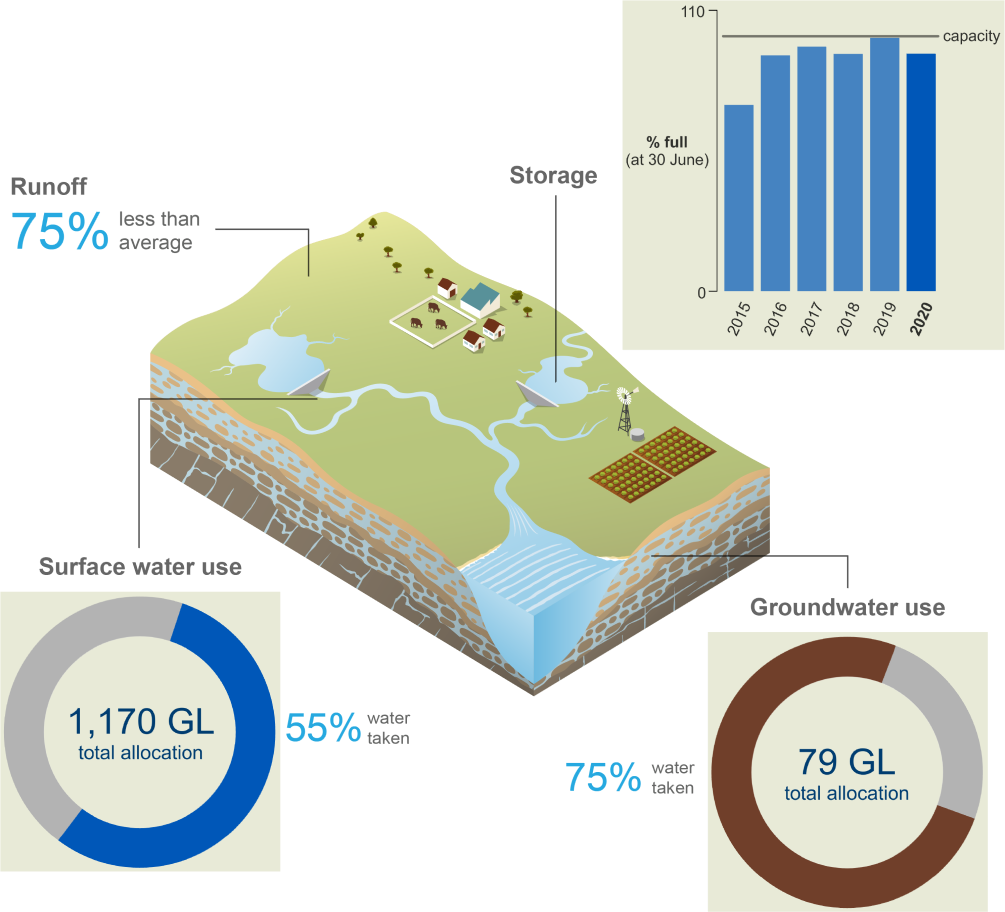
For further information on the region's water accounting statements scroll down this page or click on the links below:
Water assets

- Water asset volumes in the region at 30 June 2020 were 2,102 GL, around 90% of which is water held in storages. The remaining amount is water held in aquifers and rivers.
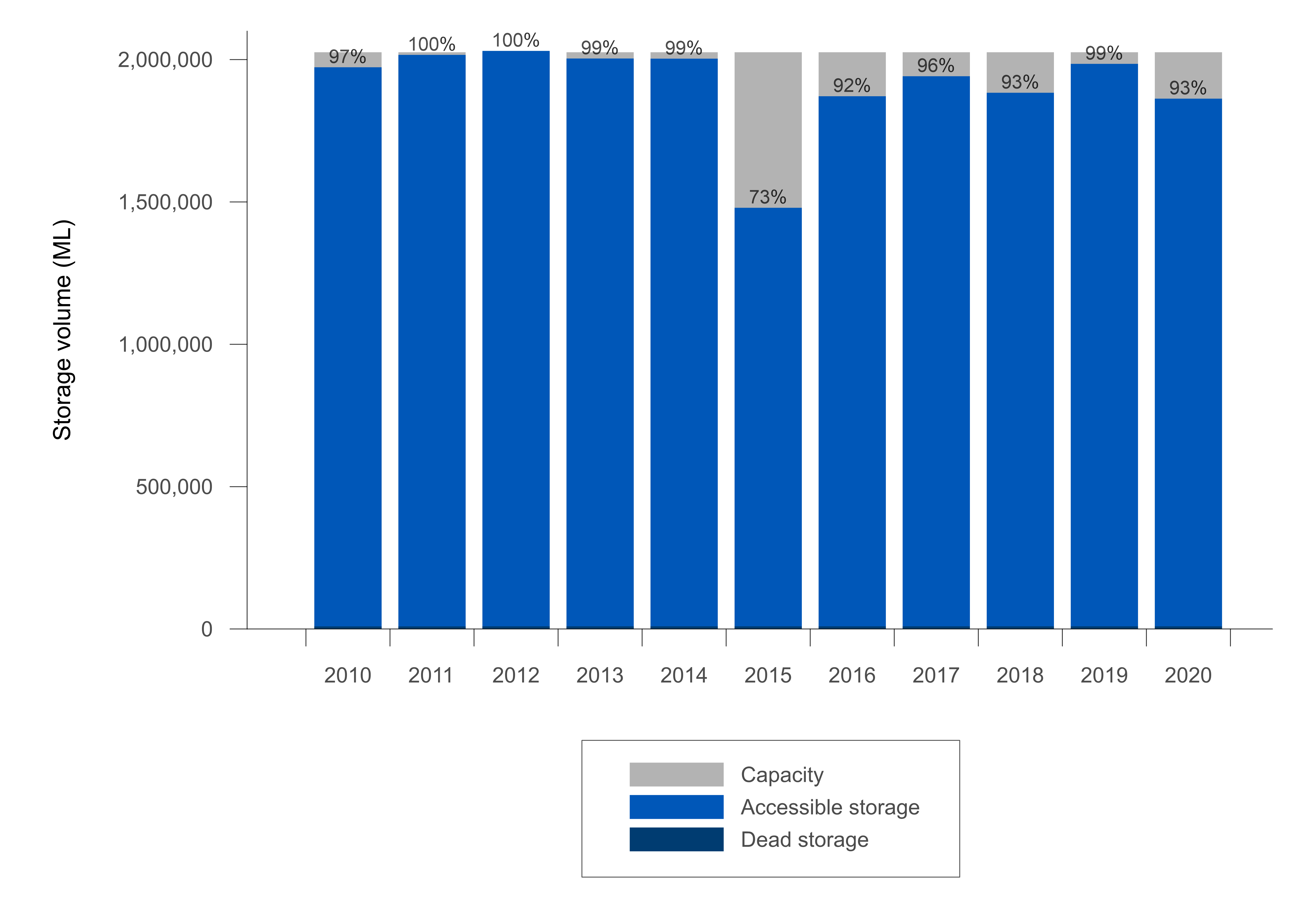
Figure S1 Total storage volume in the region at 30 June 2020 compared with the previous 10 years
- Storage volumes decreased from 99% full at 30 June 2019 to 93% full at 30 June 2020.
- Despite below-average annual rainfall in 2019–20, the drop in storage volume was relatively small. This was due to high storage inflows following heavy rainfall in late-January 2020.
- Lake Dalrymple, formed by Burdekin Falls Dam, accounts for almost 95% of the region's total surface water storage.
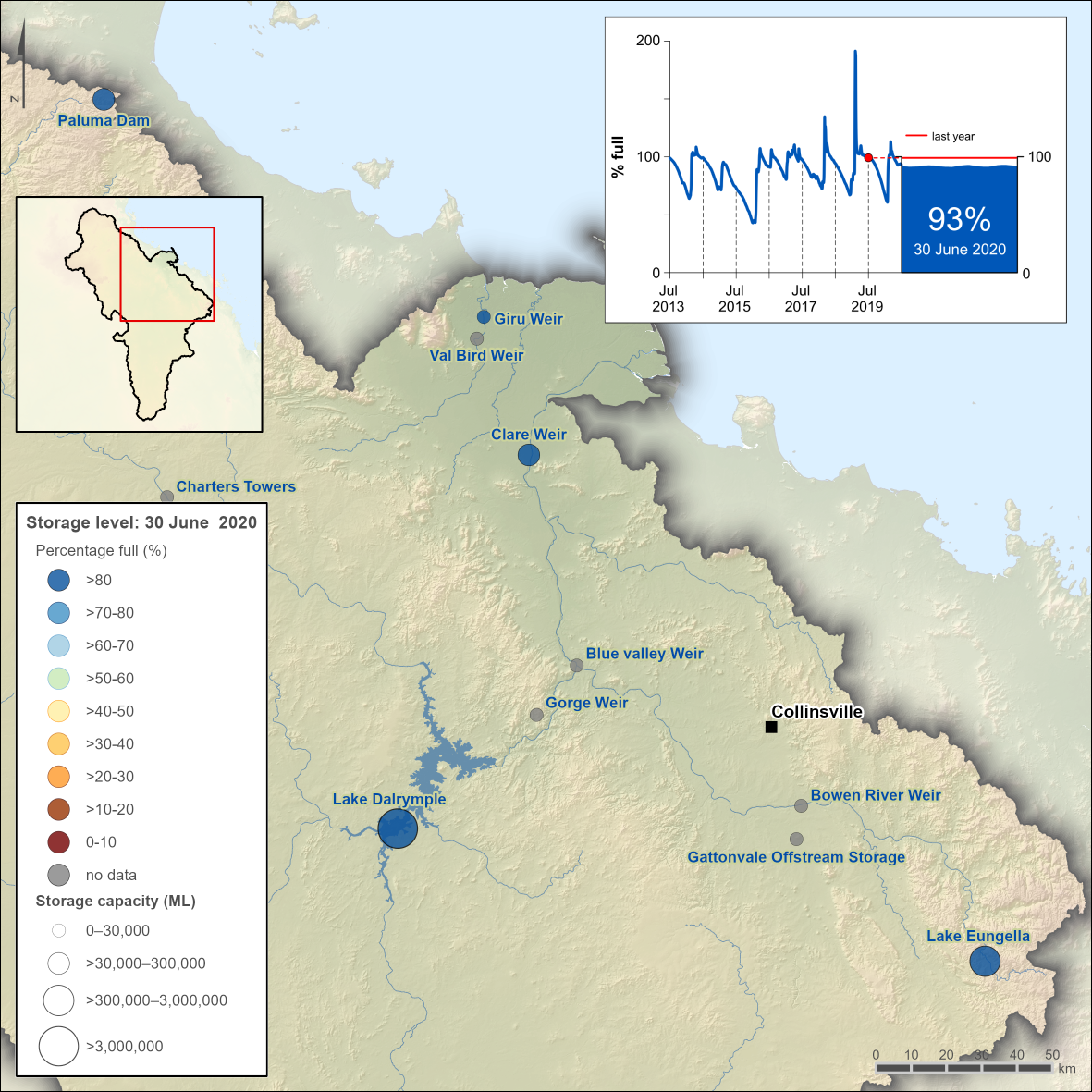
Figure S2 Percentage-full volume on 30 June 2020 for each storage and total daily storage volume from 2013–20 (inset)
- In late January 2020 storage levels had dropped to 61% full, the lowest since February 2016.
- Heavy rainfall associated with a tropical low in the Gulf of Carpentaria and a monsoon trough that impacted the region in late-January 2020 resulted in a large rise in storage levels. Storage volume increased from 61% full to above capacity in a 2-week period between 26 January–10 February 2020.
- More detailed information on the individual storages within the region is available on the Bureau of Meteorology's Water Storage website.
Water liabilities

- Water liabilities in the Burdekin region refer to the volume of allocation remaining on licence entitlements at the end of the 2019–20 year.
| Description | Individual users (ML) | Urban system (ML) | Irrigation scheme (ML) | Inter-region Transfer (ML) | |
| Opening balance at 1 July 2019 | 0 | 0 | 119,813 | 0 | |
| add | Allocation | 436,779 | 11,849 | 690,274 | 31,425 |
| less | Allocated diversion | 103,338 | 2,212 | 520,330 | 20,108 |
| less | Adjustment and forfeiture | 333,441 | 9,637 | 181,606 | 11,317 |
| Closing balance at 30 June 2020 | 0 | 0 | 108,151 | 0 | |
| Description | Individual users (ML) | Urban system (ML) | Irrigation scheme (ML) | |
| Opening balance at 1 July 2019 | 0 | 0 | 0 | |
| add | Allocation | 2,278 | 480 | 76,066 |
| less | Allocated extraction | 1,465 | 149 | 57,731 |
| less | Adjustment and forfeiture | 813 | 331 | 18,335 |
| Closing balance at 30 June 2020 | 0 | 0 | 0 | |
- All the water supply licences for the region have a water management year that ends on 30 June.
- A more detailed description of water allocations in the Burdekin region is given in the Water use section below.
Water flows

Figure S3 Water inflows and outflows for the surface water store during the 2019–20 year
Figure S4 Water inflows and outflows for the groundwater store during the 2019–20 year
- Total surface water flows into the region's storages was 2,779 GL. The key item contributing to surface water inflows was runoff, which made up 93% of total surface water inflows for the region.
- Runoff was much lower than average (based on modelled data from 1971–2020) due to poor wet season rainfall across the region.
- The key item contributing to surface water outflows from the region's storages was river outflow, which made up almost two thirds of the total surface water outflows. River outflow was well below average due to the dry conditions and low runoff across the region.
- Water taken for consumptive use was 1,011 GL, around 25% of the total outflow (see Water use section below).
Water use

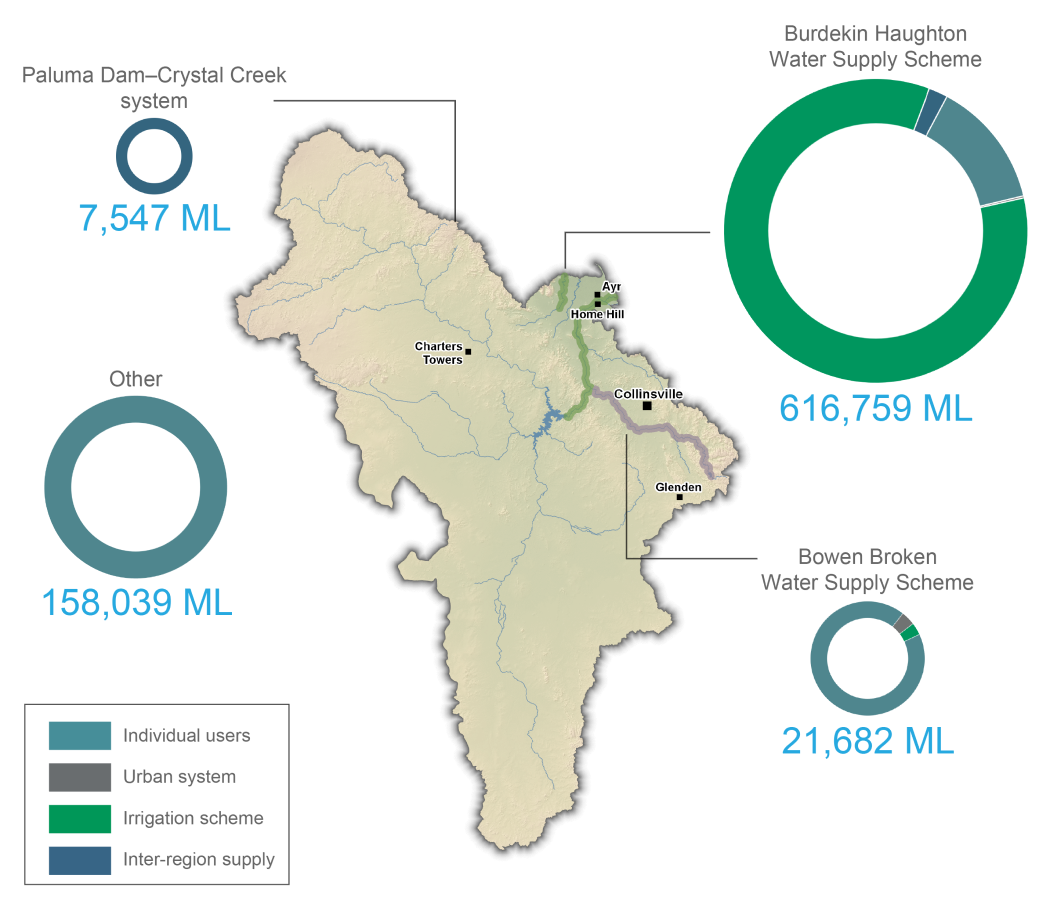
Figure S5 Surface water taken during the 2019–20 year from the region's water supply schemes and other areas
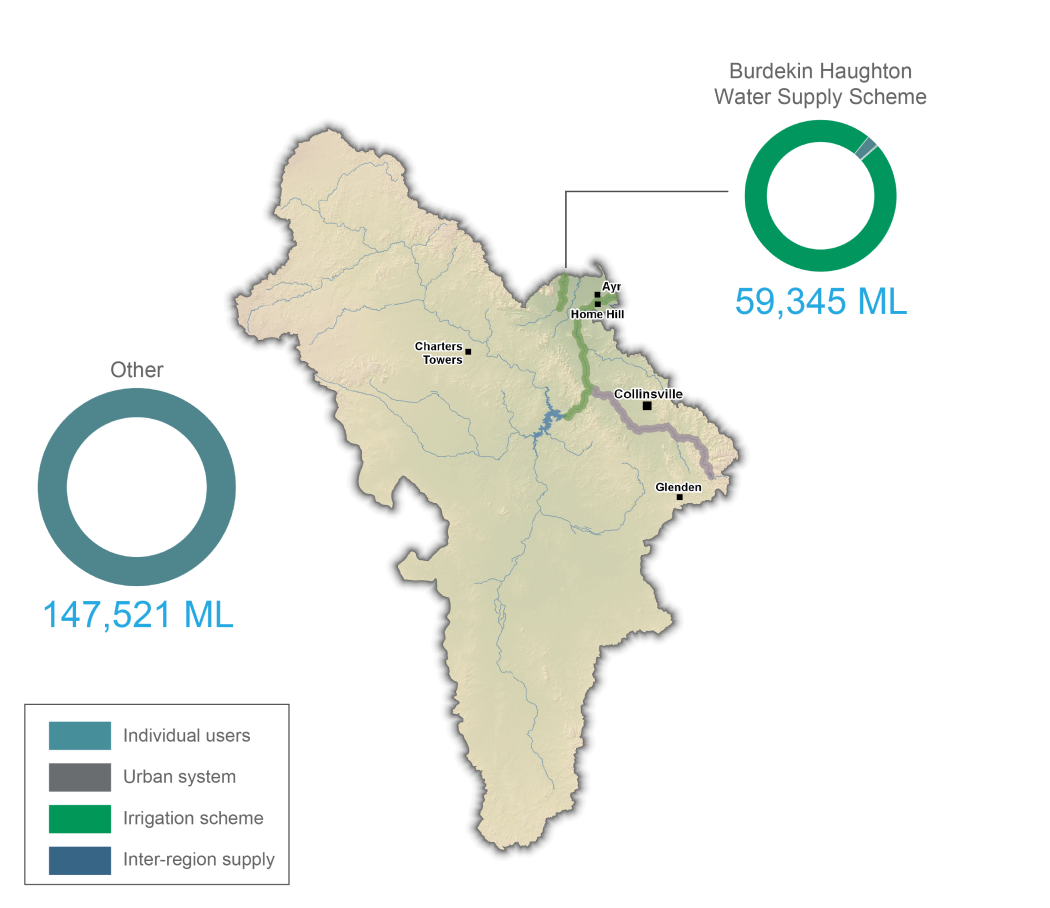
Figure S6 Groundwater taken during the 2019–20 year from the region's water supply schemes and other areas
- Total surface water diverted in the region was 804 GL.
- More than 75% of the total surface water diversions were from the Burdekin Haughton Water Supply Scheme, mainly for irrigation scheme supply.
- About one third of the diversions were for individual users, mostly non-allocated diversion (158 GL) from areas outside of the region's two major water supply schemes; 3% was for inter-region supply and less than 1% was for the urban system.
- Total groundwater extracted was 207 GL.
- 72% of the groundwater extractions were for individual users, mostly non-allocated extraction (148 GL) from areas outside of the region's major water supply scheme; 28% were for irrigation scheme supply and less than 1% was for the urban system.
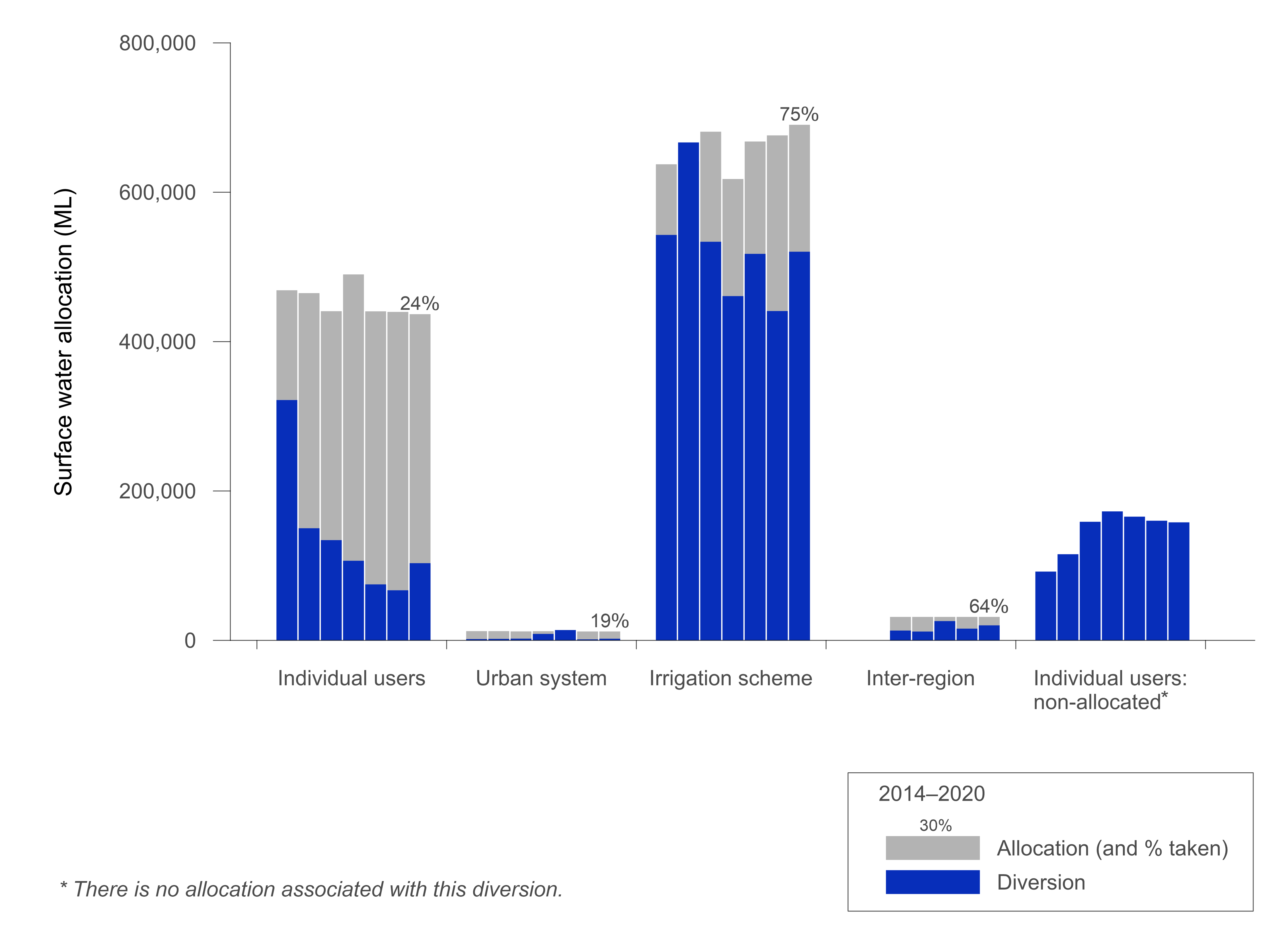
Figure S7 Surface water allocations and diversions in the Burdekin region for the year ending 30 June, from 2014–2020
- In 2019–20, total surface water allocation was 1,170 GL, mostly for irrigated agriculture in the Burdekin River Irrigation Area. 55% of the allocated surface water was taken.
- Surface water diversions for the irrigation scheme were 18% higher than last year. This increase was influenced by the drier conditions across the region's irrigation scheme areas compared to last year.
- Surface water diversion for individual users increased from last year; the first increase in surface water use by individual users in the region for six years.
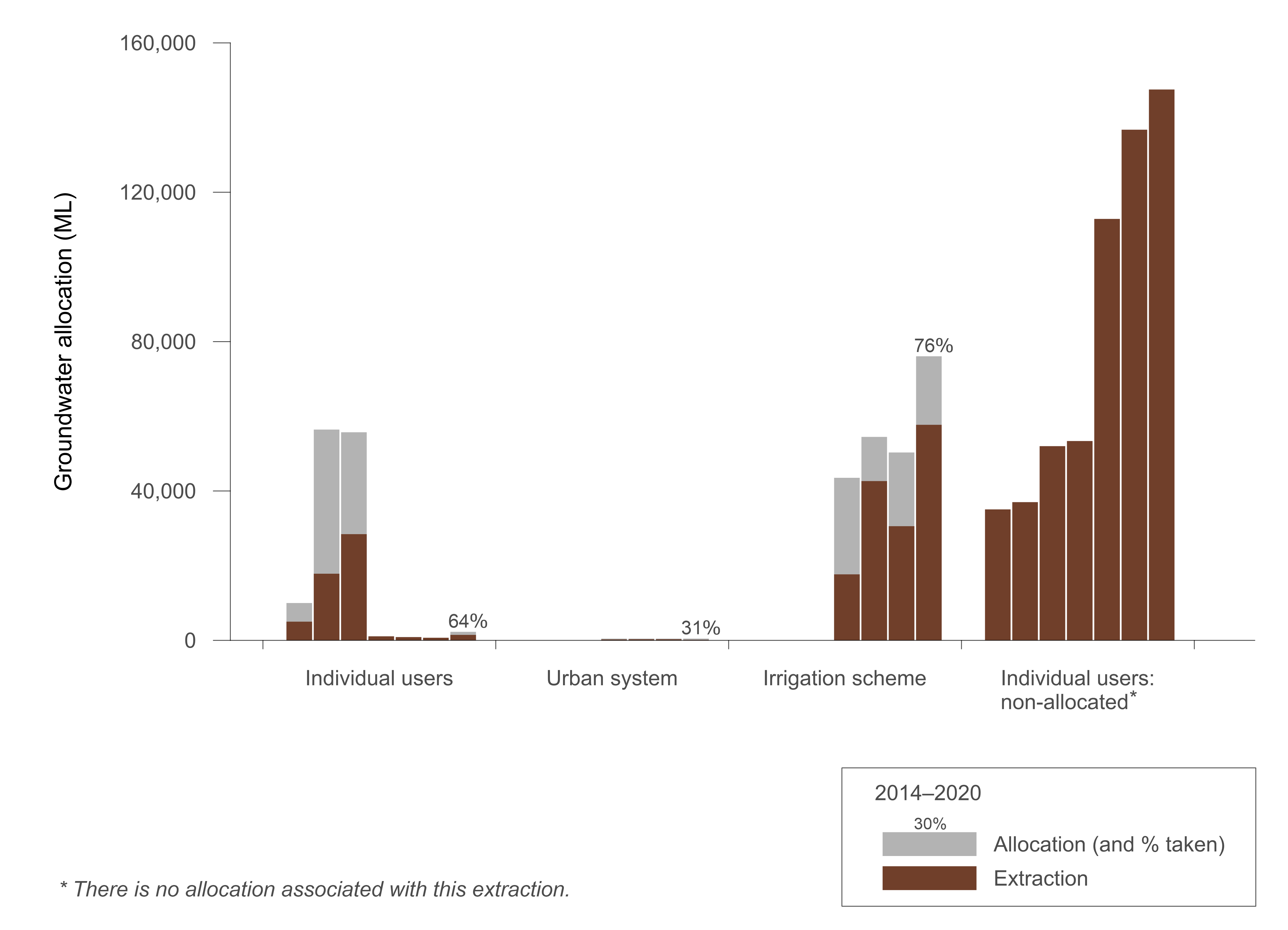
Figure S8 Groundwater allocations and extractions in the Burdekin region for the years ending 30 June, from 2014–2020
- In 2019–20, total groundwater allocation was 79 GL, mostly for irrigated agriculture in the Burdekin River Irrigation Area. 75% of the allocated groundwater was taken.
- Allocations and extractions for the irrigation scheme were higher than the previous year. Similar to surface water supply for irrigation, the increase in groundwater use for irrigation was influenced by the drier conditions across the region.
- Groundwater extractions to individual users were similar to the previous year.
- The large increase in non-allocated extractions to individual users in 2017–18 was due to a number of additional licences being issued during that year.
Water market activity

- In 2019–20, a total of 26,402 ML of surface water allocations and 27,038 ML of surface water entitlements were traded.
- A total of 9,108 ML of groundwater allocations and 3,131 ML of groundwater entitlements were traded during the year.
- For more information on water trade in the region, see the Bureau's Water Market Dashboard.
- For information on the allocation and trading rules, see the Burdekin Basin water management protocol.
Cultural and environmental water

Cultural benefit
- The water plan for the Burdekin region supports water-related cultural values, including the values of the traditional owners in the plan area, and provides mechanisms that support water being made available for Indigenous communities (see the Cultural water management section in the 'Region description').
- Cultural water provisions are generally linked to the environmental water requirements in the plan.
Environmental benefit
Environmental water provisions
- Environmental water provisions are defined at several rivers in the Burdekin region to maintain the rivers' natural ecological processes.
- The environmental water release requirements for the region's Burdekin Haughton and Bowen Broken water supply schemes are outlined in Attachment 2 of the schemes' Resource Operations Licence (see the Queensland Government website).
Environmental water outcomes
- Environmental water outcomes relating to the Burdekin Haughton and Bowen Broken water supply schemes were not available for the 2020 Account.









